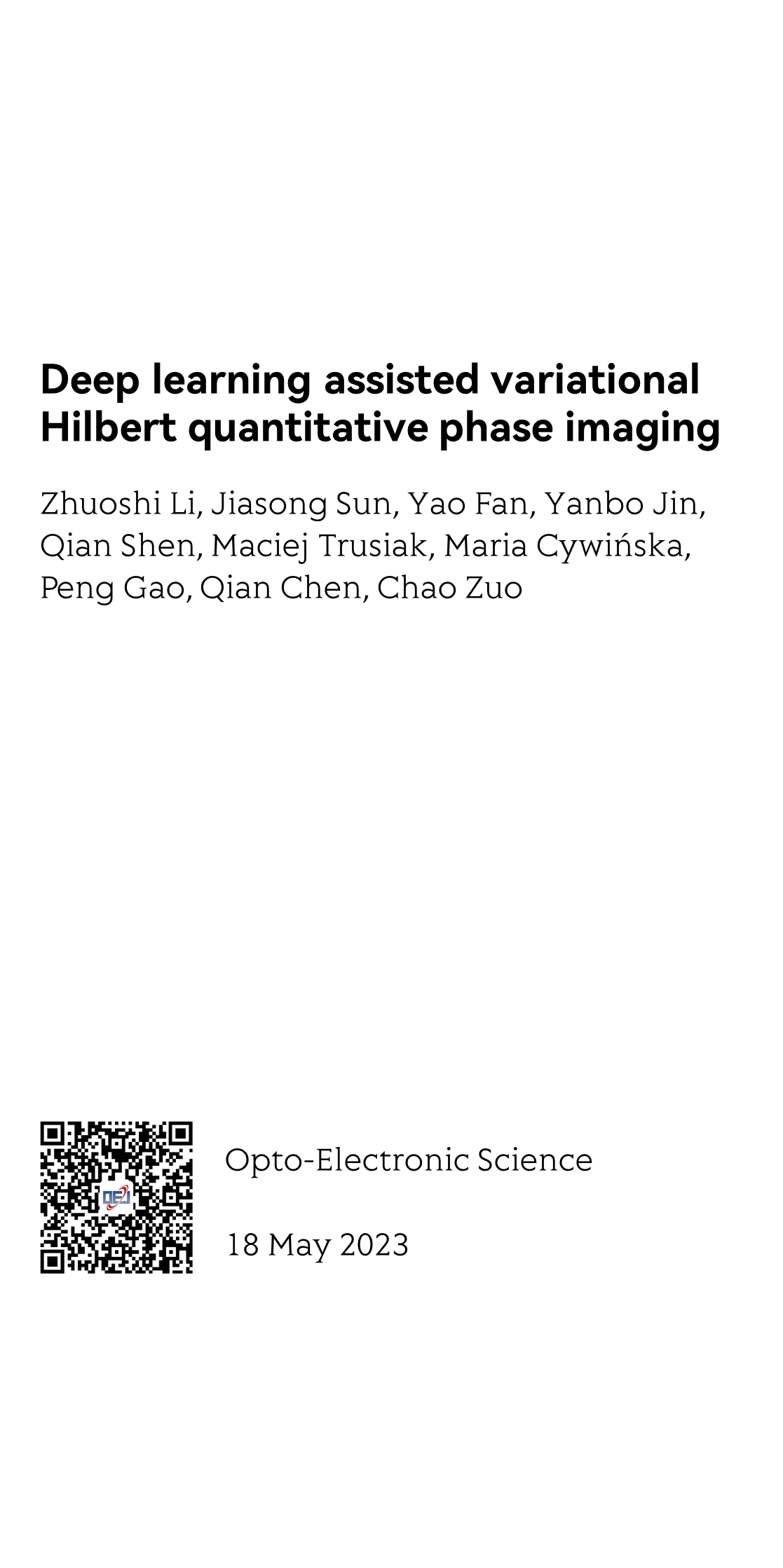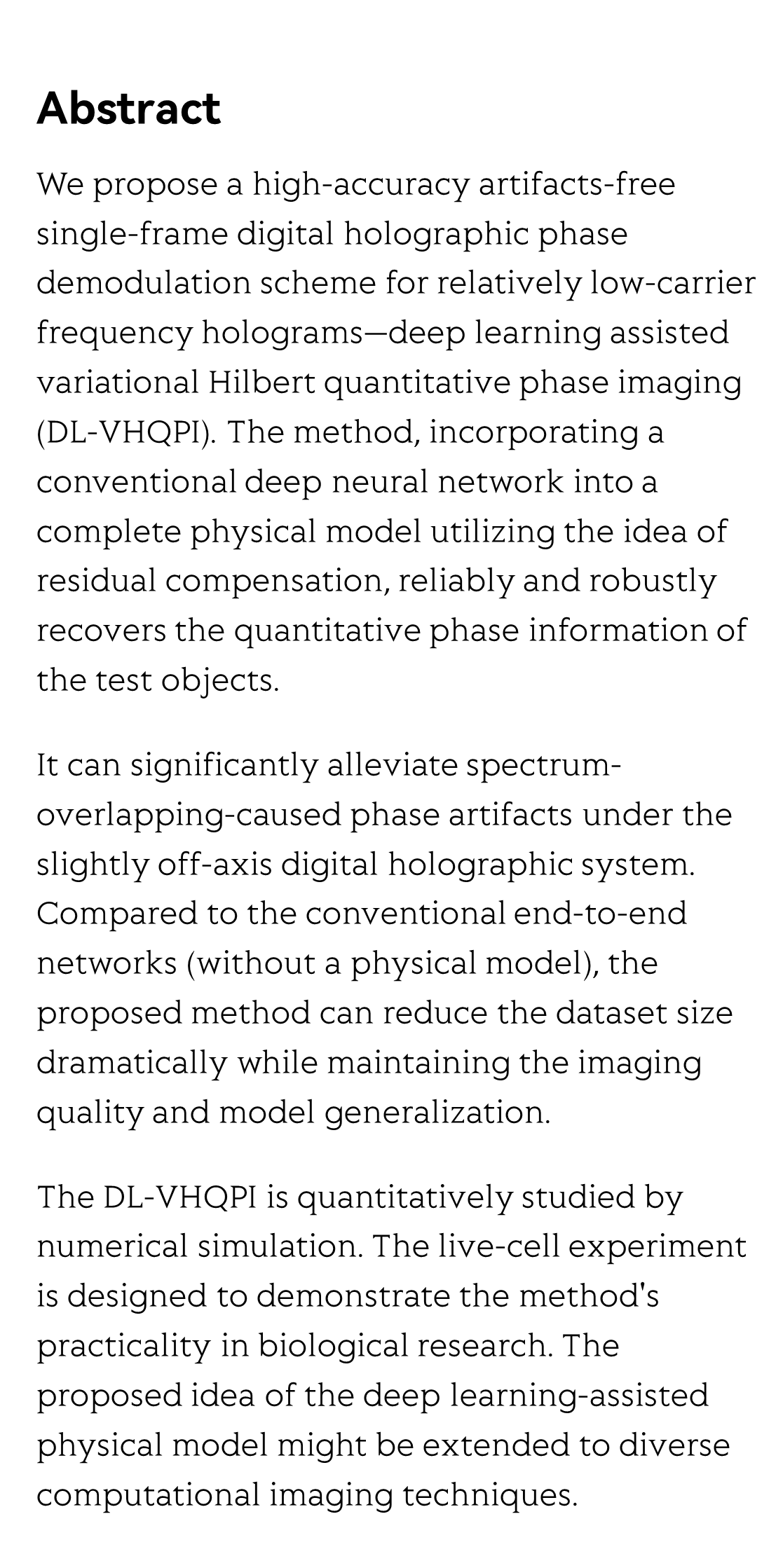(Peer-Reviewed) Deep learning assisted variational Hilbert quantitative phase imaging
Zhuoshi Li 李卓识 ¹ ² ³, Jiasong Sun 孙佳嵩 ¹ ² ³, Yao Fan 范瑶 ¹ ² ³, Yanbo Jin 金彦伯 ¹ ² ³, Qian Shen 沈茜 ¹ ² ³, Maciej Trusiak ⁴, Maria Cywińska ⁴, Peng Gao 郜鹏 ⁵, Qian Chen 陈钱 ³, Chao Zuo 左超 ¹ ² ³
¹ Smart Computational Imaging Laboratory (SCILab), School of Electronic and Optical Engineering, Nanjing University of Science and Technology, Nanjing 210094, China
中国 南京 南京理工大学智能计算成像实验室
² Smart Computational Imaging Research Institute (SCIRI) of Nanjing University of Science and Technology, Nanjing 210094, China
中国 南京 南京理工大学智能计算成像研究院
³ Jiangsu Key Laboratory of Spectral Imaging and Intelligent Sense, Nanjing 210094, China
中国 南京 江苏省光谱成像与智能感知重点实验室
⁴ Institute of Micromechanics and Photonics, Warsaw University of Technology, 8 Sw. A. Boboli St., Warsaw 02-525, Poland
⁵ School of Physics, Xidian University, Xi'an 710126, China
中国 西安 西安电子科技大学物理学院
Opto-Electronic Science, 2023-05-18
Abstract
We propose a high-accuracy artifacts-free single-frame digital holographic phase demodulation scheme for relatively low-carrier frequency holograms—deep learning assisted variational Hilbert quantitative phase imaging (DL-VHQPI). The method, incorporating a conventional deep neural network into a complete physical model utilizing the idea of residual compensation, reliably and robustly recovers the quantitative phase information of the test objects.
It can significantly alleviate spectrum-overlapping-caused phase artifacts under the slightly off-axis digital holographic system. Compared to the conventional end-to-end networks (without a physical model), the proposed method can reduce the dataset size dramatically while maintaining the imaging quality and model generalization.
The DL-VHQPI is quantitatively studied by numerical simulation. The live-cell experiment is designed to demonstrate the method's practicality in biological research. The proposed idea of the deep learning-assisted physical model might be extended to diverse computational imaging techniques.
Flicker minimization in power-saving displays enabled by measurement of difference in flexoelectric coefficients and displacement-current in positive dielectric anisotropy liquid crystals
Junho Jung, HaYoung Jung, GyuRi Choi, HanByeol Park, Sun-Mi Park, Ki-Sun Kwon, Heui-Seok Jin, Dong-Jin Lee, Hoon Jeong, JeongKi Park, Byeong Koo Kim, Seung Hee Lee, MinSu Kim
Opto-Electronic Advances
2025-09-25
Dual-frequency angular-multiplexed fringe projection profilometry with deep learning: breaking hardware limits for ultra-high-speed 3D imaging
Wenwu Chen, Yifan Liu, Shijie Feng, Wei Yin, Jiaming Qian, Yixuan Li, Hang Zhang, Maciej Trusiak, Malgorzata Kujawinska, Qian Chen, Chao Zuo
Opto-Electronic Advances
2025-09-25





